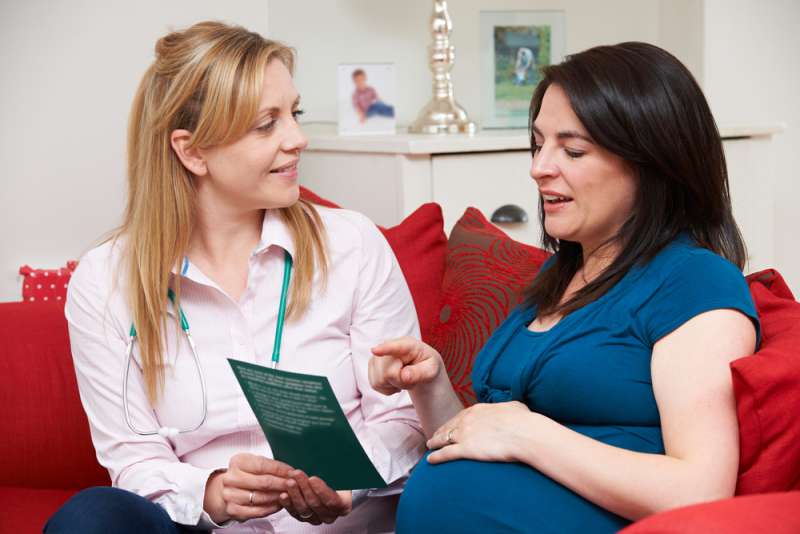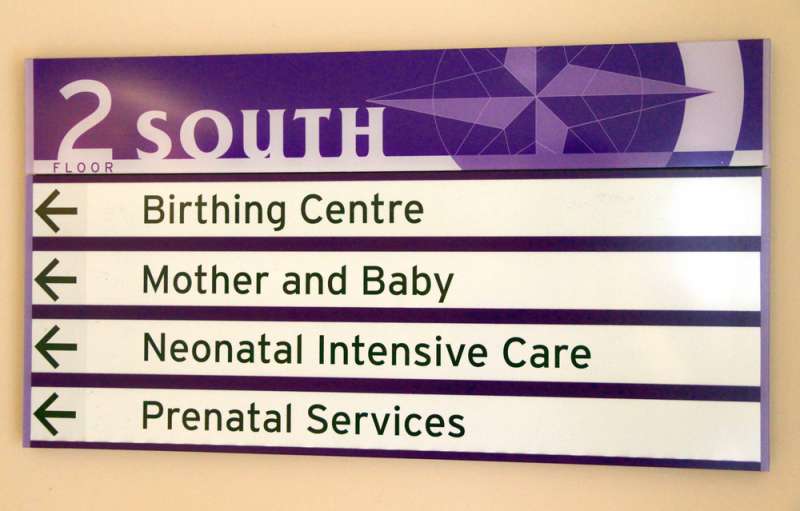The different childbirth options in Australia

As a parent, you will constantly be faced with important decisions to make. These decisions start from the time you find out you’re pregnant. There are a lot of choices to make throughout your pregnancy and about your birthing experience. Some things you’ll face decisions about are who will care for you during your pregnancy, birth and during your postnatal period; where you will give birth at; and what type of pain medication, if any, that you want to help you manage labour pains. It’s vital that you learn about all of your options and carefully consider what is best for you and your family.
Choosing a Pregnancy Care Provider
You have several choices of what type of care provider that you will have care for you during pregnancy, birth and shortly after birth. Often times, you will receive care from multiple care providers.
1. Midwives
Midwives specialize in care of normal pregnancy and birth. A midwife can care for you during your pregnancy, throughout your labour and birth as well as during your postnatal period. Midwives generally spend at least 3 years in schooling before they qualify and register as a midwife.

2. General Practitioners
General practitioners can go through specialized training beyond their normal degree if they would like to have the option to provide care for women throughout their pregnancy. If you’re interested in this, you can ask your GP about their qualifications.

3. Obstetricians
Obstetricians complete extensive education and training to become specialists of female reproductive health including pregnancy, birth, and postnatal care. They are well trained for complications and emergencies.

Choosing Where to Receive Care and Give Birth
There are various places for women to receive care as well as give birth including public or private hospitals, birth centres, and even a woman’s own home. Your options may be limited depending on your location, so be sure to check what is available in your area.
1. Public Hospital Maternity Clinic
Birthing in a public hospital maternity clinic is free under Medicare. If you choose to have your birth at a public hospital maternity clinic, you will likely be seen by multiple different midwives and obstetricians throughout your pregnancy and all of your visits will take place at the actual hospital. You won’t get to choose who will provide your care during your labour and birth as it will simply depend on who is working when you go into labour.

2. Shared Care
With a public hospital maternity clinic, you’ll also have the option of doing shared care. This is when your care is split between your GP (general practitioner) and the maternity clinic. After an evaluation at the maternity clinic, you’ll see your GP for your regular checkups. The hospital will still take care of all of your scans as well as anything else outside your GP’s range of abilities. You’ll also give birth at the hospital and be attended to by the midwives and obstetricians who are on duty there during your labour and birth. A downfall of doing shared care is that you may be responsible for some costs.

3. Community Midwifery Programs
Community midwifery programs are usually run by small teams of midwives and are publicly funded. They operate at facilities in the community. You must be considered low-risk to choose this route of care. A continuity of care model is usually adhered to with community midwifery programs. What this means is that a woman is usually able to see the same midwife throughout her antenatal care, labour, birth as well as during her postnatal period. This helps to build a positive relationship based on trust, which can greatly improve the woman’s overall experience.
4. Birth Centre
Birth centres are typically attached to a hospital and run by a team of midwives. To get care from and give birth at a birth centre, your pregnancy must be considered to be low-risk. They tend to take a more natural approach to pregnancy and birth, and are designed to help make you feel more at home than the typical hospital setting tends to. They are often furnished much like a home to help provide a more relaxed vibe while also remaining well-equipped in case of possible complications. They are also well-prepared to transfer to the hospital in case of emergency. Most birth centres provide care throughout your pregnancy, labour, birth and postnatal period. If this is what you’re interested in, you should enroll as soon as you are able to as available spots tend to go quickly.
5. Private Hospital
If you decide you want to give birth at a private hospital with private insurance, be careful to check to see exactly what your insurance covers to avoid any unexpected costs. If you plan to go with a private hospital without having private insurance, know that you will be responsible for all costs involved. As a private patient, you get to choose not only who will be providing your care but also where you will be giving birth at.If you already know who you want to be your obstetrician, contact them to find out what hospitals would be options for you. Vice versa, if you know where you want to give birth, contact that hospital to find out who your options are for obstetricians. You will go to see your obstetrician for all of your appointments throughout pregnancy and then your obstetrician will come to the hospital to meet you when it is time for your baby to be born.
6. Home Birth
Another option for women with low-risk pregnancies is a home birth with a midwife. This usually costs 3-6000 dollars, but it can be a great choice if you can afford it and plan to have a completely natural birth. You get to be in the comfort of your own home with complete control over your environment and the people present. If an emergency were to arise, you can be taken to the hospital immediately and your midwife can go with you.
Labour Pain Management Options
Labour and childbirth is a very intense experience and is considered to be very painful by most. Fortunately, there are plenty of things you can do to help you make it through the pains of labour and birth. Learn about and discuss the different options available to you with your pregnancy health care provider. It’s always good to know what you plan to do beforehand, but it’s also good to be open-minded in case you decide or need to go a different route than originally planned.
1. Coping with Pain Naturally
There are plenty of completely natural ways to cope with labour and birth. It’s a good idea to educate yourself on how labour works and what will be happening with your body during the process of labour. This can be empowering for women and help them to embrace the natural process of childbirth. Some helpful tips to help you get through labour naturally include:
· Stay healthy throughout your pregnancy
· Employ special breathing techniques
· Move around as much as possible
· Try different positions
· Get support from your partner
· Listen to calming music
· Have your partner massage you
· Take a bath or shower
2. TENS (Transcutaneous Electrical Nerve Stimulation)
TENS is a technique used for pain relief during labour. A device is used to send small electrical pulses into the nerves in the lower back. The pulses are controlled by the woman using a small handheld device. There are no known side effects for mother or baby, although it does not provide pain relief for some women.
3. Gas and Air
Another way to relieve pain during labour is with nitrous oxide, commonly known as gas and air. A labouring woman is given either a face mask or possibly just a tube with the gas that she can choose when to inhale from. It’s important for her to begin inhaling as soon as she feels a contraction coming on as it takes a short moment for the gas to actually take effect. This is a great option as it is simple to use and the woman is able to control it herself. It is also relatively harmless as it doesn’t stay in the mother’s or baby’s system. It does have the potential to cause a few mild side effects such as nausea, vomiting, and disorientation. However, if the labouring woman experiences any of these, she can simply stop using the gas and air.
4. Pethidine Injection
Pethidine is a strong pain reliever; it can be given through an IV, but is more often given with an injection. Pain relief from pethidine usually lasts between 2-4 hours. Nausea medicine is often administered with the injection as it can make you feel rather sick. Other possible side effects include:
· Giddiness
· Disorientation
· Altered Perception
· Respiratory depression, or reduced breathing
· Breathing difficulties in the baby
· Difficulty for the baby in breastfeeding
5. Epidural
Probably the option that gives the most complete relief from labour pains is epidural anaesthesia. An injection of anaesthetic is delivered through the labouring woman’s spine and is meant to numb the woman from the waist down. Since the woman can’t feel her lower half, she will be confined to the bed and given a catheter while the epidural is in effect. While the epidural is very effective, it also comes with a fair amount of risks, including:
· Decrease in blood pressure
· Nausea and vomiting
· Longer labour
· Lowered chance of normal vaginal delivery
· Increased chance of fetal distress
· Infection
· Difficulty breathing
Other Decisions to Consider for Childbirth
In addition to who your care provider will be, where you’ll give birth, and how you’ll cope with pain, there are many other important details to consider regarding your childbirth. You’ll need to decide who you want to be with you at the time of birth, whether or not you want pictures or even a video of the birth, and a myriad of other little details. It’s a great idea to write out a birth plan detailing your desires for your birth. Discuss your birth plan with your pregnancy health care provider to help ensure that your desires are known. Even though it’s good to have a plan, don’t forget to keep an open mind as with childbirth, anything can happen and our plans often must be thrown aside.
Most Viewed
-
5 Common Methods of Contraception
Last updated On by Percy Oad -
How to Cope with Male Infertility
Last updated On by Alina -
What is the Difference Between Primary and Secondary Infertility?
Last updated On by Madison -
How to start a child-free life after infertility
Last updated On by Jacinta








